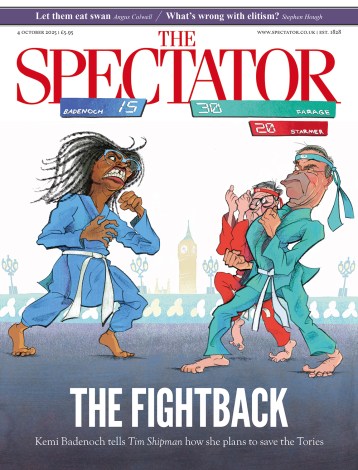All bark and no bite | 28 March 2018
The latest film from Wes Anderson is a doggy animation set in a fantasy Japan and as there was a screening in London earlier this week for owners and their dogs I took my own dog, Monty. He said he liked it. It was ‘good’, he said. I did not especially trust his opinion so investigated further. As good as, say, drinking from the toilet? ‘No,’ he said, ‘not as good as that, obvs.’ As good as this tennis ball here? ‘No’, he said, ‘because a tennis ball is always AMAZING!’ As good as cheese? ‘Nothing is as good as cheese. Fair play, you caught me out there.’ You didn’t




















